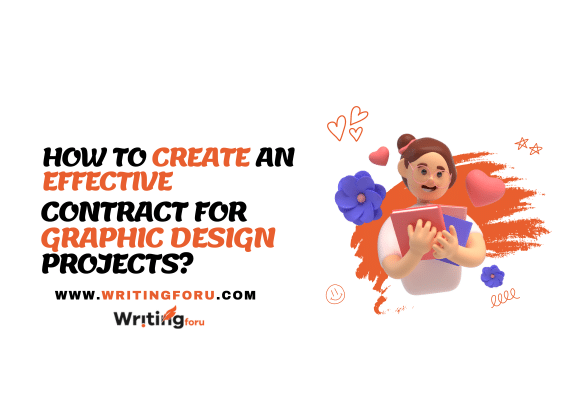INTRODUCTION
A graphic design contract is a legal agreement between a graphic designer and their client, outlining the terms and conditions of the project. It serves as a protection for both parties and ensures that everyone is on the same page regarding the scope, timeline, budget, and deliverables of the project. A well-written graphic design contract protects both the designer and the client, ensures that the project runs smoothly, and helps to avoid misunderstandings or legal disputes. It is important to review and sign the contract before beginning any work.
The purpose of a project agreement is to establish clear expectations and responsibilities for all parties involved in the project and to minimize the risk of misunderstandings or disputes. It is also a good idea to have a lawyer review the contract to ensure that it is legally enforceable and covers all necessary terms and conditions.
ELEMENTS OF A GRAPHIC DESIGN CONTRACT

Here are some important elements that a graphic design contract should include:
- Scope of work: This section outlines the specific tasks and services that the designer will provide, such as designing a logo, creating marketing materials, or developing a website.
- Timeline: This section specifies the deadlines for each phase of the project, including the start and end dates, and the date of delivery of the final product.
- Budget: This section outlines the total cost of the project, including any additional fees, such as revisions or rush charges. It should also include payment terms and details, such as payment schedule and payment method.
- Ownership and intellectual property rights: This section clarifies who will own the final product, such as the design files, and any copyrights or trademarks associated with it.
- Revisions and changes: This section outlines how many revisions or changes are included in the project, as well as any additional fees that may apply if the client requests further revisions beyond the agreed-upon amount.
- Termination clause: This section outlines the circumstances under which the contract can be terminated by either party, such as non-payment, breach of contract, or changes to the scope of work.
- Confidentiality: This section specifies the confidentiality of the project and any information or materials shared between the designer and the client.
- Warranties and indemnification: This section outlines the designer’s warranties that their work is original and free from infringement and the client’s indemnification that they will not hold the designer liable for any claims or damage arising from the project.
- Governing law and dispute resolution: This section specifies the governing law of contract and outlines the procedure for resolving any disputes that may arise.
CREATING AN EFFECTIVE CONTRACT FOR GRAPHIC DESIGN PROJECTS

Creating an effective contract for graphic design projects is important for both the designer and the client to establish clear expectations, deadlines, and payment terms.
Here are some key elements to include in your graphic design contract:
- Scope of work: Clearly outline the scope of the project, including specific deliverables, timelines, and any revisions or rounds of feedback that will be allowed.
- Payment terms: Specify the total project cost, any deposit or upfront fees required, and the payment schedule. Be sure to also include information about late fees or penalties for missed payments.
- Ownership and usage rights: Define who will own the final designs and how they can be used. This includes specifying whether the client will have exclusive or non-exclusive rights to use the designs, and whether the designer can use the work in their portfolio or for self-promotion.
- Confidentiality: Include a confidentiality clause that ensures the designer will keep the client’s information and designs confidential, and that the client will not share the designs with third parties without the designer’s permission.
- Termination clause: Specify the circumstances under which either party can terminate the contract, including how much notice is required and what fees or payments are owed in the event of termination.
- Dispute resolution: Include a clause that outlines how any disputes will be resolved, such as through mediation or arbitration.
- Signatures: Both parties should sign and date the contract to indicate their agreement to the terms.
CONCLUSION
Creating an effective contract for a graphic design project can help ensure that both parties are on the same page and can help prevent misunderstandings or disputes. If you are unsure about the language to use in your contract, it may be helpful to consult with an attorney who specializes in contract law. It is important to include all the necessary clauses and have a legal expert review the contract before signing. By having a solid contract in place, both parties can work together with confidence and achieve success.

